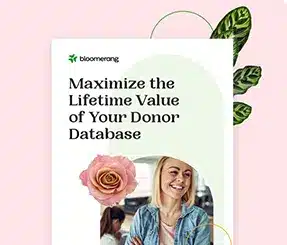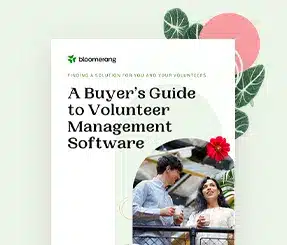[ASK AN EXPERT] Should I Still Use Direct Mail?
If so, with what lists and what are some best practices?


Full Platform Overview Chat With Us



Full Platform Overview Chat With Us




Our Ask An Expert series features real questions answered by Claire Axelrad, J.D., CFRE, also known as Charity Clairity. Today’s question comes from a nonprofit employee who wants advice on how to use direct mail and make it perform better:
Dear Charity Clairity,
My boss thinks direct mail is dead, plus that it’s too expensive and we should switch to all email. From what I’ve read, snail mail still performs better than digital. What do you think? Are there parts of the list we should send to, and others we should not? Also, what are some tips to make direct mail perform better?
— I’ve Got Questions
Dear I’ve Got Questions,
First, you’re correct; direct mail is not dead.
Donors like receiving mail, especially from someone they like. In fact, research reveals direct mail has an average 5.3% response rate – outperforming other channels (e.g., email, 0.1%; paid search, 0.6%; online display marketing, 0.2%). Plus, 70% of people report direct mail feels more personal than digital approaches.
Second, you don’t have to limit yourself to one channel.
There are many ways to reach potential donors today, including direct mail, email, social media, phone calls, texts, ads and more. You never know where someone may see your message, so it makes sense to take a multi-channel approach. Just take care to make the giving experience seamless – with easy back and forth, from one media to another — or you’ll fail to empower folks to give when they’re feeling the most inspired. This means proactively connecting and collaborating with marketing and IT staff to assure all preconditions are in place to strike while the iron is hot! For example:
Third, your house file will be your performance leader.
This list (or compilation of multiple lists) includes all current donors, past donors, volunteers and people affiliated with you in other ways (e.g., members, service users, alumni, grateful patients, campers, event attendees, etc.). As compared with a rented or exchanged prospect list of people who’ve never engaged with you, the house file is “warm.” Definitely mail to these folks to assure you keep them close and, hopefully, increase the lifetime value of their giving. A “best practice” is to avoid bulk mail for this group so you can take advantage of personalization. Yes, it’s more expensive up front, but the ROI makes it a worthwhile investment. Every piece in a bulk mailing must be alike; a bit of differentiation makes all the difference. When people feel acknowledged as individuals, they’re more likely to feel a sense of responsibility to respond. Here’s what I suggest:
Final thoughts: Unlike other channels, direct mail has lasting value. It often hangs around serving as a tangible reminder of your cause (e.g., on a desk, table, countertop, or refrigerator). Unlike email, which either is deleted immediately or buried at the bottom of an overfull inbox, direct mail offers a chance your busy donor will put it aside for later — when they have more time or are in a better mood. Plus, direct mail gives you more space to make your case for support. Make sure your appeal includes a compelling story, an emotionally moving photo and personal touches. All these things.
Hopefully this answers your questions!
— Charity Clairity (Please use a pseudonym if you prefer to be anonymous when you submit your own question, like “I’ve Got Questions” did.)
Does your organization use direct mail? Let us know in the comments.

Comments